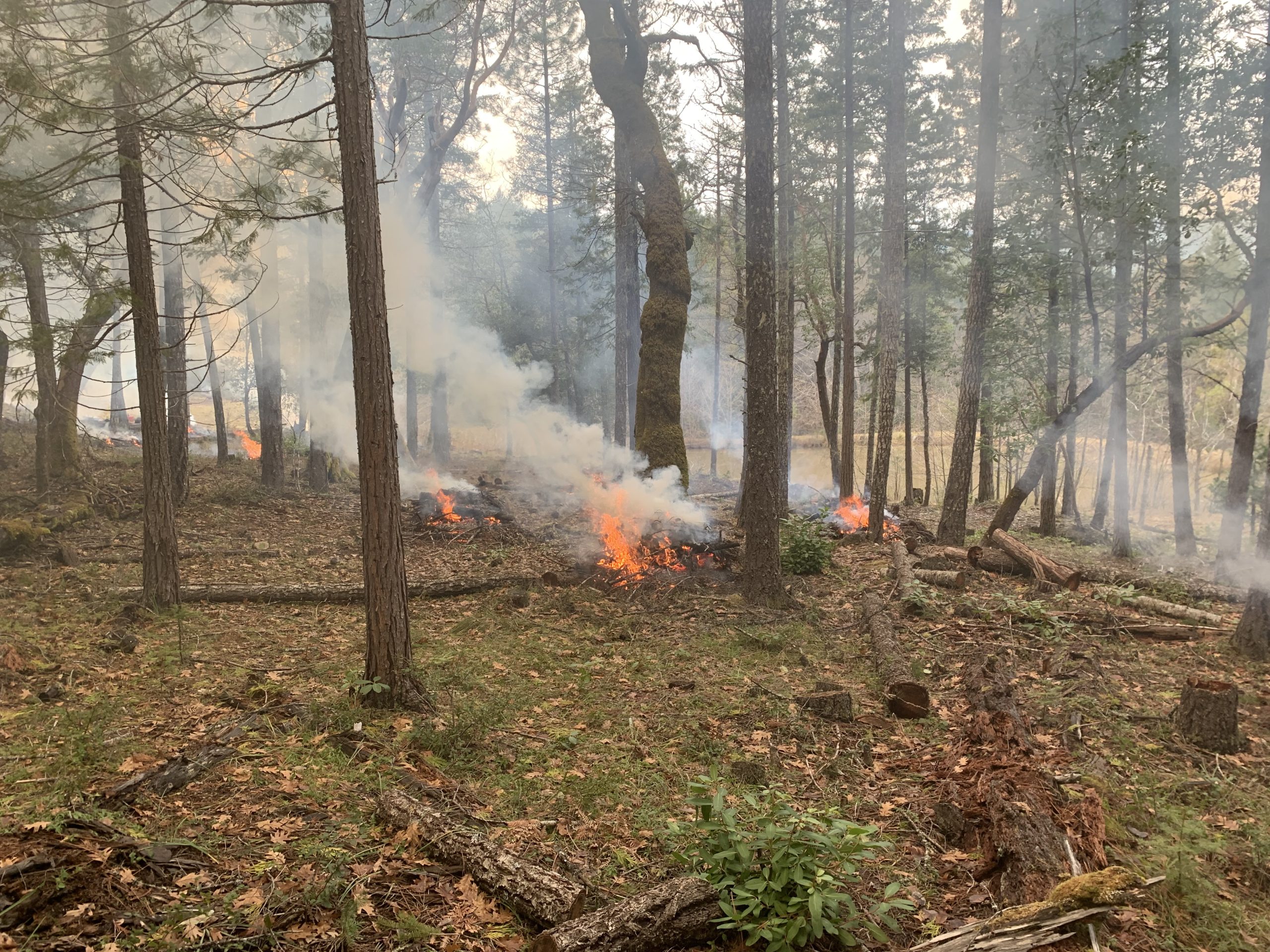Your Forest Update for February 2022
Putting beneficial fire on the ground in the Applegate Valley
The Rogue Forest Partners’ Williams Project aims to restore 860 acres within a larger 7,800-acre planning area. Ecological forestry treatments protect and promote large, resilient legacy trees (primarily hardwoods in Williams) while thinning smaller, younger trees that have grown dense over decades of fire exclusion. This work enhances wildlife habitat and reduces the risk of severe wildfire to the ecosystem and adjacent communities. It also helps sustain local jobs and provides workforce training and development opportunities to help Southern Oregon communities build more capacity for forest restoration. Last spring, partnership member Lomakatsi Restoration Project completed approximately 275 acres of ecological thinning on BLM and private lands near Cave Camp Road, close to Williams. This winter, their crews are back to conduct prescribed pile burning to eliminate the slash. They have completed 82 acres so far and will continue as weather conditions allow. An inter-tribal crew of young adults employed by Lomakatsi has been working closely with their Rogue Valley-based crew to implement the prescribed burning. The nature of the Rogue Forest Partners’ collaborative, stewardship-based work promotes such workforce development opportunities and equitable jobs for those who make our communities and ecosystems more resilient. By returning beneficial fire to the landscape, we are creating more resilient forests and safer communities while setting the stage for better land stewardship for generations to come. While fire professionals carefully coordinate prescribed fire operations to minimize smoke, we recognize that this work can impact nearby residents. We appreciate the continued Applegate community support while we accomplish this critical work.West Bear wildfire fuels reduction treatments continue this Spring
In addition to work on the Williams Project and ongoing work on the Upper Applegate Watershed projects, the Rogue Forest Partners are implementing restoration treatments in two other nearby landscapes. Adjacent to the Applegate Valley, the partners added the West Bear All-Lands Restoration Project to the Oregon Watershed Enhancement Board-sponsored Rogue Forest Restoration Initiative. West Bear combines multiple funding sources on proposed strategic treatments in the wildland urban interface stretching from Talent to Jacksonville. The objectives of the West Bear Project include enhancing public safety and forest resiliency while modeling community collaboration around forest and wildfire management. Initial work in the project area began with a FEMA Hazard Mitigation Grant Program award to Lomakatsi through the Oregon Office of Emergency Management. Ecological fuels reduction on private lands in the Anderson Creek area is ongoing and has been complemented by additional adjacent treatments funded by Oregon Department of Forestry. Treatments include creating defensible space within 100 feet of homes and ecological thinning within 500 feet of structures and roads, targeting strategic ridgelines, egress, and ingress areas to improve evacuation and first responder access and safety. Growing partner investment in the West Bear Project has been bolstered by new philanthropic funding and additional leadership from the nonprofit Sustainable Northwest. USDA Natural Resources Conservation Service also provides significant funding through a competitive Regional Conservation Partnership Program award—for which planning with private landowners is currently underway.Oregon Senate Bill 762 supports local restoration efforts
The comprehensive legislation in Senate Bill 762 passed with bipartisan support will provide more than $220 million to help Oregon modernize and improve wildfire preparedness through three key strategies: creating fire-adapted communities, developing a safe and effective response, and increasing the resiliency of Oregon’s landscapes.
Members of the Rogue Forest Partners successfully collaborated on three SB-762 grant proposals for projects that reduce wildfire risk by restoring landscape resiliency and conducting ecological hazardous fuels reduction on both private and public lands. Nearly $4 million will be applied to the projects listed here and the Ashland Forest Resiliency Project.
SB-762 has illustrated the need and Oregonians’ willingness to invest in wildfire risk reduction in a comprehensive and significant way. We thank our legislators and the organizations who mobilized to pass this bill!
Photo: Lomakatsi conducts a controlled pile burn in the Williams Project area to enhance wildlife habitat, protect large legacy trees, and reduce the risk of severe wildfire to the community.

